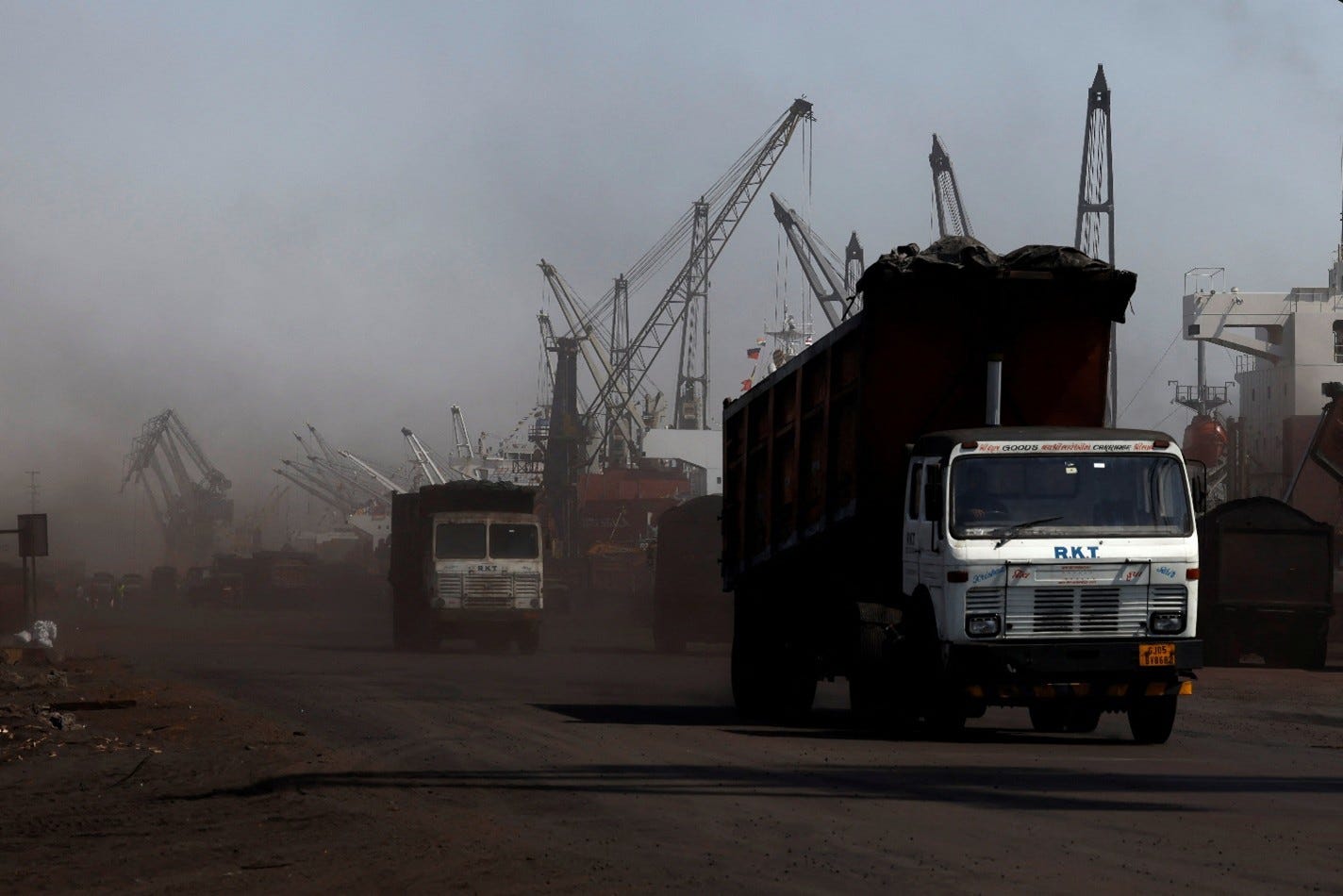As India Remains in Coal’s Grip, China May Escape
Delhi changes rules to allow for more pollution as China goes renewable
By: Tim Daiss
The government in New Delhi can’t get out of its own way. On the one hand, it has made strides to ramp up renewable energy investment and development to help rein in its greenhouse gas emissions. On the other hand, it keeps pushing coal usage, the world’s most lethal and dirtiest burning fossil fuel. In its latest move, the Indian Environment Minister on July 11 changed its own rules and exempted most coal-fired power plants from installing technology designed to reduce sulphur dioxide (SO2) emissions.
The new notification relaxes the 2015 regulations that mandated nearly all new coal-fired power plants in the country install Flue Gas Desulphurization (FGD) systems to control SO2 emissions. The most striking change is the complete exemption of approximately 78-79 percent of India's coal-based power units (categorized as Category C) from installing FGD equipment. These are plants located beyond a 10-kilometer radius of major cities or critically polluted areas. Category A and B plants, meanwhile, at varying distances from population centers, have either extended deadlines for installing FGDs or will be determined on a case-by-case basis. Thermal power plants declared to retire before December 31, 2030, are also exempted from meeting SO2 norms if they submit an undertaking.
The move shouldn’t come as a surprise. There was reportedly already a low compliance rate since India’s average ground-level SO2 measurements have largely been registering below permissible levels, a new Hindu report found. An expert appraisal committee also found that Indian coal is low in sulphur. As such, SO2 levels in cities near plants with operational FGD units don’t differ significantly from those without these units. All of these were also well below permissible levels, the report added.
However, that is missing the point. While an argument can be made that the country’s SO2 levels are reasonably low, coal-fired power plants in India produce extraordinarily high levels of carbon dioxide (CO₂). In 2023, CO₂ emissions from Indian coal reached roughly two billion metric tons for the first time, a substantial increase from 1990 levels, according to a Reuters report. The conversation, therefore, would be better suited around extensive coal-fired power plant retirement than relaxing existing guidelines.
In some Indian states with high coal-fired electricity generation, coal emissions can contribute significantly to overall nitrogen dioxide pollution. The cost of coal emissions, in terms of crop damage, can be substantial, with rice and wheat damage exceeding mortality damage at many power stations, a new Stanford Doerr School of Sustainability report found. India's CO₂ emissions rank third globally, behind China and the US, accounting for around 8 percent of total global and projected to increase by nearly 5 percent.
India is also planning to significantly increase its coal production to help offset over-reliance on coal imports. The country’s Ministry of Coal has set a target to boost production by 42 percent over the next five years, aiming to reach 1.533 billion metric tons by 2030-2031. Not only does that fly in the face of the country’s earlier decarbonization commitments, it all but guarantees that India won’t meet any of those commitments either in the near or long term. This points to an even larger problem within the Indian government. It simply doesn’t see the dangers of coal production or massive coal usage.
In comments to reporters in late 2022, Indian Finance Minister Nirmala Sitharaman showed the government’s troubling sentiment towards coal. “Coal is going to be back again as gas [is] becoming unaffordable,” she said. “It’s not just India; many countries have gone back. And coal is now going to be back again, because I think gas cannot be afforded. Or it is not available as much as you want.”
India’s coal usage quandary is a powerful symptom of Asia’s enduring, complex relationship with the fuel. The region is the largest consumer of coal globally. China, in particular, is the world's largest coal consumer, accounting for more than half of global consumption, according to International Energy Agency(IEA) data. India is the second-largest consumer, and the region as a whole has seen a significant increase in coal consumption in recent decades, offsetting declines in other regions like North America and Europe.
China’s coal addiction, however, varies greatly compared with India’s. Even as China continues its remarkable renewables development, both its solar and wind power development leads the world’s second largest renewable energy developer, the US, by a more than 2:1 ratio, it’s still sanctioning new coal-fired power projects. Much of the problem is on the provincial level. A seeming plethora of regional governors continue to greenlight new coal-fired power projects. Provincial governments frequently approve new coal projects to boost local GDP, provide jobs, and secure energy independence, sometimes even when the electricity isn't strictly needed.
The problem is so persistent that even Beijing has had a hard time controlling it despite issuing directives aimed at limiting new coal-fired power project development. While there's been a recent decrease in coal plant approvals, construction continues, and some provinces have been slow to implement central government directives.
However, coal power project trajectory is still slowing down, giving China a better chance of weaning itself off of coal reliance than India. India, on the other hand, seems locked into coal usage far beyond any rationale that can be given, both in terms of sustainability, energy economics, and simply good governance.


Bloody hopeless. We're all doomed by these short-sighted idiots in power...